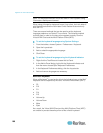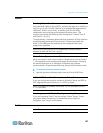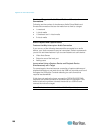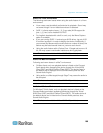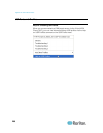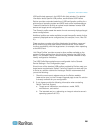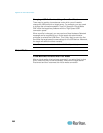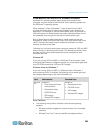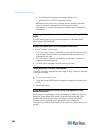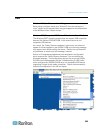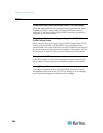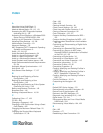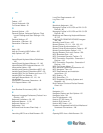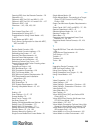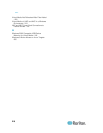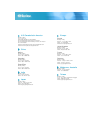
Appendix A: Informational Notes
204
Only Windows Fat partitions are supported by Linux
Windows FAT and NTFS supported by Mac
Mac users must unmount any devices that are already mounted in
order to connect to a target server. Use >diskutil umount
/dev/disk1s1 to unmount the device and diskutil mount /dev/disk1s1
to remount it.
Accessing Virtual Media on a Windows 2000 Server Using a D2CIM-
VUSB
A virtual media local drive cannot be accessed on a Windows 2000
®
server using a D2CIM-VUSB.
Disconnecting Mac and Linux Virtual Media USB Drives
In a Linux
®
or Mac
®
environment:
For Linux users, if there is /dev/sdb and /dev/sdb1, the client will only
use /dev/sdb1 and advertise it as removable disk. /dev/sdb is not
available for the user.
For Linux users, if there is /dev/sdb but no /dev/sdb1, /dev/sdb is
used as a removable device.
For Mac users, /dev/disk1 and /dev/disk1s1 is used.
Target BIOS Boot Time with Virtual Media
The BIOS for certain targets may take longer to boot if media is mounted
virtually at the target.
To shorten the boot time:
1. Close the Virtual KVM Client to completely release the virtual media
drives.
2. Restart the target.
Virtual Media Connection Failures Using High Speed for Virtual
Media Connections
Under certain circumstances it may be necessary to select the "Use Full
Speed for Virtual Media CIM" when a target has problems with "High
Speed USB" connections or when the target is experiencing USB
protocol errors caused by signal degradation due to additional
connectors and cables (for example, a connection to a blade server via a
dongle).



